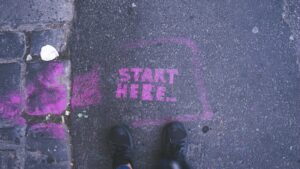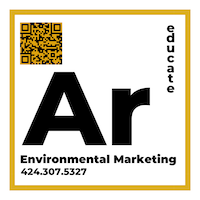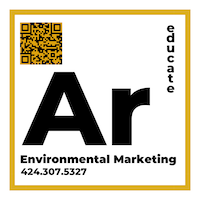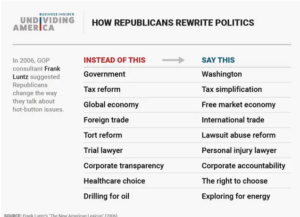Stop Calling it Environmentalism
Environmentalism: The natural world is being destroyed and it is a moral imperative to preserve and reconstitute as much of it as possible as soon as possible. If only the environmental movement were framed so simply in the public’s eye (or traces of neural circuitry, rather). – George Lakoff
The human brain thinks in terms of frames, according to Cognitive Linguistics Expert George Lakoff. Our brains’ ability to make rapid assumptions based on a few words makes our brains open up or shut down. When we hear a frame we agree with, we listen; when we hear a frame we don’t agree with, our brain quite literally shuts out information. When we hear frames that we’ve never heard before and that don’t fit into another frame we already have, we LISTEN!
As we embark on many new ways of life, it’s time for us to start building new frames for discussing vital topics, that impact our health and everyday life. The advantage of discussing these deeply bi-partisan topics in new ways is that we all profit in terms of health and financial gains. If we can all agree that we’d like to live a long life and build wealth while doing so, it’s high time to make new frames. Here are six lessons we can take from communications expert George Lakoff as we develop communication strategies for sustainable movements, brands, and policies.
Lesson #1 – What exactly are frames?

All thinking and talking involve framing. Frames are more than words; they are building blocks of understanding a particular topic, which we use as quick reference points for understanding. As a subconscious force, frames dictate how we think and talk. They act as concepts and metaphors working with our emotions to create narratives that our brains cannot avoid.
“Moreover, many frame-circuits have direct connections to the emotional regions of the brain. Emotions are an inescapable part of normal thought. Indeed, you cannot be rational without emotions. Without emotion, you would not know what to want, since like and not-like would be meaningless to you. When there is neither like nor not-like nor any judgment of the emotional reactions of others, you cannot make rational decisions.
Since political ideologies are, of course, characterized by systems of frames, ideological language will activate that ideological system. Since the synapses in neural circuits are made stronger the more they are activated, the repetition of ideological language will strengthen the circuits for that ideology in a hearer’s brain. And since language that is repeated very often becomes “normally used” language, ideological language repeated often enough can become “normal language” but still activate that ideology unconsciously in the brains of citizens—and journalists.” – George Lakoff
[su_youtube url=”https://www.youtube.com/watch?v=fpIa16Bynzg&feature=youtu.be” width=”600″ height=”400″ responsive=”yes” autoplay=”no” mute=”no” title=”” class=””]
Lesson #2 What activates frames?

While frames are not words, frames are activated by words. One word can act as a frame or a metaphor, and once activated, bring up an entire system that the frame is in. Over time, as frames are built within the brain’s network of understanding, words quickly fire up the relationship from one neuron to another.
Frames act on a hierarchy, according to Lakoff, whereby moral frames are at the top. Any frame below that can activate everything up to the top. Yes, one word or phrase can communicate entire ideologies, and the person hearing will only allow through what matches their current “frame” of reference.
The frames working in the human brain challenge sustainable communicators and marketers. It is the battle of discussing highly essential topics in a polarized political landscape. For sustainability communicators, this piece of knowledge is vital. What we do with this information is create new frames or new pathways of understanding. We omit old frames that, while yes, some people might align with, they leave out the massive amounts of people that also must be brought to the table.
In his book “Don’t Think of an Elephant,” Lakoff explains the two models of morality working in a highly polarized U.S. One he calls the “strict father” and the other the “nurturant parent.” The strict father mindset is associated with conservative moral thinking and the nurturant parent with more liberal ethical thinking. There are a host of words and phrases that evoke each. Navigating these modes of morality with new sustainability communications means knowing who you want to talk to, and speaking to them in that language. It also indicates where new frames must exist; you must create them to surpass the current mindset.
Lesson #3 The dangers of environmental framing

The framing of health, economy, food, security, and trade as “environmental” has removed a large swath of people from the conversations that must be had. Everyone is affected by environmental issues; however, the word itself shuts down brain synopsis in many people who see the word as merely a liberal topic. Nothing could be further from the truth when cancer has no party lines. Everyone needs to take part in conversations and policies that affect health outcomes. Some established conservative frames have removed people’s ability to learn new concepts and apply new discussions, new ideas, and innovations to collaboratively solve some of the issues around health, economy, food, security, and trade.
Exceptional framing offers people new modes of learning that directly impact their quality of life and help tackle topics like contaminated drinking water or carcinogenic plastic consumption. The dangers of framing topics as “environmental” remove a person’s ability to participate in their own health and wellbeing. Environmental frames keep conservatives detached from problems that are quite literally killing them. The solution is to go around those barriers and create new frames they haven’t worked with that fit into a conservative mode of communications.
Lesson #4 Successful vs. failed frames

Framing is all about creating worldview building blocks that go beyond language, but that triggers those ideas through careful word selection. In the U.S., conservatives have been incredibly successful with a long-term strategy of framing thanks in part to 30-years of wordsmithing from strategist Frank Lutz. Lutz is responsible for the reframing of the following concepts for the purpose of owning the topic.
The purpose of reframing these topics was that conservatives knew that they should own the language of hot-button issues. When anyone with another viewpoint comes to speak on these issues and uses the vocabulary and thus framing of the other side, it brings to point the title of George Lakoff’s book “Don’t think of an elephant.” That’s because the first impressions you have on the topic now are associated with the other side. Instead, when discussing hot topic issues, never use the language of the other side. Stick to the values and higher-level features of the issues.
You would think protecting resources that we all use would be equally important to everyone. That assumption has largely been the downfall of environmental communication. Those who wish to communicate about the environment assume it is important to everyone and use the same tired frames that many ignore. While conservatives have had decades to build successful frames, topics that have been driven by a more progressive wing have only recently started to create some of these frames.
Lesson #5 Emerging environmental frames

In the last five years, there has been an acceleration of elevating environmental communications beyond old frames and into a place that supports Environmental Literacy for more people than just “environmentalists.”
Significant numbers of sustainability leaders are exploring new ways to discuss and design sustainable supply chains and the business proof for the existence of sustainability in all areas of life. Below are some promising frames that have emerged in recent years that we should look to promote, create content around, and use in our everyday interactions on environmental topics.
- Sustainable Development Goals (SDGs)
- The Regulated Commons
- Sun-Based Food vs. Industrialized Oil-based Food
- Overall Wellbeing Indicator
And moving from frames like these that shutdown communication:
- Climate change
- Environmental
- Propaganda
- Manipulation
- Capitalism
Take a moment and feel the difference in each set of words above. What does your framing system do to evaluate each of those framed topics? In the newer framed versions, you might notice that your mind begins to ask more questions and be more open to new pathways of understanding. The older frames you have a predetermined understanding of, maybe even some judgments of your own. So how do you create these new, more effective frames? Let’s learn what Lakoff says about creating new frames.
Lesson # 6 Rules of engagement

Creating new frames is vital but must be done with extreme care. More than just using new words, creating frames can be detrimental when not considering all aspects and outcomes of the new frame. According to George Lakoff, here are some considerations to make before engaging in creating new frames.
- Talk at the level of values and frame issues in terms of moral values. Distinguish values from policies. Always go on offense, never a defense. Never accept the right’s frames: don’t negate them, or repeat them, or structure your arguments to counter them. That just activates their frames in the brain and helps them.
- Provide a structured understanding of what you are saying. Don’t give laundry lists. Tell stories that exemplify your values and rouse emotions. Don’t just give numbers and material facts without framing them so their overall significance can be understood. Instead, find general themes of narratives that incorporate the points you need to make.
- Context matters: be aware of what’s going on. Address everyday concerns. Avoid Technical jargon; use words people can understand. The messenger matters. Visuals Matter. Body language matters.
Sustainable brand marketers and communicators are tasked with the high-level objective of going beyond preaching to the choir. Sustainability efforts are weak when we don’t have all hands on deck. For sustainable brands, communicating the need for your product, service, or policy, must go beyond corporate “green teams,” if you’re looking for making a considerable impact. Environmental Literacy for adults is no small task; however when understanding some basics about how frames and linguistics work, you can begin to build a communications roadmap to broad audiences.
When it comes to dismantling old environmental frames, it takes creativity for replacing them with new, more inclusive ones. These lessons from George Lakoff demonstrate why Environmental Marketing is vital and must be handled with precision and care.
Resources
https://www.thoroldnews.com/local-news/beyond-local-the-power-of-talking-about-energy-change-2285491
https://theieca.org/resources/environmental-communication-what-it-and-why-it-matters
https://www.tandfonline.com/doi/full/10.1080/17524030903529749
https://www.businessinsider.com/political-language-rhetoric-framing-messaging-lakoff-luntz-2017-8
https://www.theguardian.com/sustainable-business/george-lakoff-green-marketing
https://armarketinghouse.com/what-is-environmental-literacy-and-is-it-missing-in-the-workplace/



